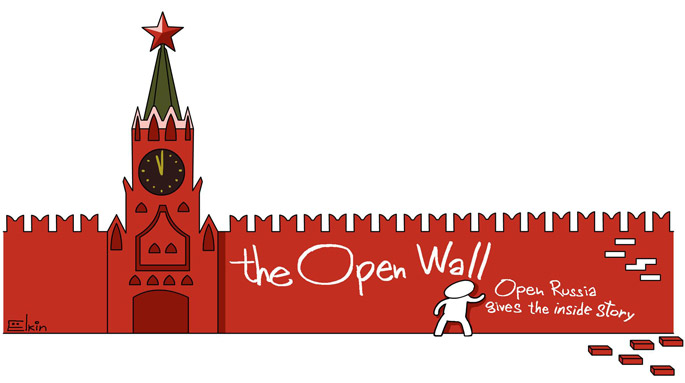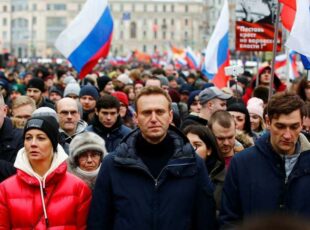Ivan the Terrible

Ivan the Terrible
On 14 October, the city of Oryol saw the unveiling of Russia’s first ever monument to Ivan the Terrible.

Although the idea originally came from the ultra-jingoists, it clearly found support at state level – the unveiling was attended by Archimandrite Eli (the spiritual father of Patriarch Kirill), President Putin’s biker pal Zaldostanov (aka “the Surgeon”) and Oryol regional governor Vadim Potomsky.
Governor Potomsky couched his justification for the monument in terms that suggested his real affections lie closer to the present than the past: “Ivan the Terrible forced everyone to sit up and take note of Russia. He made Russia what it is. I have great respect for strong leaders, because only a strong leader can take the nation forward.”
After listening to the official speeches, Vladislav Nazarov, senior researcher at the RAN Institute of World History, told Novaya Gazeta that Russia often turns to Ivan the Terrible when heavy-handedness requires legitimisation. The tsar was lauded most of all during the Stalin era, especially from the late 1930s onwards. The Soviet focus was on his struggle with the boyars – the old elite that was supposedly obstructing the process of centralisation.
History professor Andrei Zubov believes that Ivan the Terrible should be remembered, but not immortalised in stone: “Even the Millennium of Russia monument does not feature Ivan the Terrible. Karamzin condemned him as the scourge of the people, the greatest there was. His deeds were awful. Although he did some good in the early years under the influence of advisers, what came next erased all that. He plunged Russia into the Time of Troubles. Ivan the Terrible is a villain of Russian history.”
Until recently, Ivan the Terrible’s atrocities were pretty much undeniable. Even a year ago, the historical journal Dilettante was able to tell of the tsar’s ferocity through mere assertions, without feeling the need for historical proof: “Ivan the Terrible ordered his victims to be sewn up in bearskins and thrown to the dogs. Others were boiled alive in oil, drowned in the river or blown up by gunpowder.”
In the run-up to the ceremony in Oryol, it was decided that the butcher tsar’s reputation needed a polish. On the eve of the unveiling, Russian Culture Minister Vladimir Medinsky stepped in. Delivering a public lecture at the State Historical Museum, he dismissed all the slurs against Ivan the Terrible made by foreign commentators. Describing Ivan the Terrible as an outstanding figure, he argued that compared with European monarchs of the age (such as Charles IX of France) Ivan the Terrible was not as terrible as all that: during the Oprichnina period, the Russian tsar ordered the execution of (only) 37,000 people.
At times, Medinsky’s medieval discourse bore an uncanny resemblance to latter-day Kremlin propaganda: “Why all the baloney about Ivan the Terrible, about devouring babies, about stripping women naked and hanging them on a gibbet over the dining table while their husbands supped? Why did it all suddenly appear during the Time of Troubles? Because Russia was being dismembered! Because several major polities were waging war against Russia. The very existence of the state and the people was hanging by a thread. During the Troubles, Russian statehood in its canonical form ceased to exist.”
Leaping nimbly across four centuries, Medinsky concluded his lecture on Ivan the Terrible with a reflection on the downed MH17 and the West’s interminable information war against Russia. “The origins of this information war, alas, hark back to the days of Ivan the Terrible.”
Curiously, even opponents of the despotic tsar speak of him in a modern context. According to political analyst Kirill Rogov, the historical turmoil at the start of the 16th century was a direct consequence of Ivan the Terrible’s reign. “The crisis arose from the fact that the tsar completely destroyed the previous political structure and elite, turned scum into big shots, tore up the fabric of political continuity. The seeds of the Troubles were planted by Ivan the Terrible. It’s a thread that runs through the whole of Russian history. Until that fact is acknowledged, it will continue.”
Needless to say, the arguments on the website of the state news agency TASS, which asked the public whether Russia needed a monument to Ivan the Terrible, ran along different lines.
Marina Antipova: “In the Middle Ages there could have been no other tsar. No one else would have survived and kept the state together, never mind expand its territory. Show me a single squeaky-clean king or duke in the West…”
Alexander Dombrov: “If there are monuments to Peter the Great, let there be monuments to Ivan the Terrible, Stalin, etc. All reformers have their victims. Who are we to judge them!”
Gennady Potebnya: “He didn’t bend to the Western barbarians. How many years did he rule? There you go. No one ever ruled like that again. It’s right to put up a monument, it’s our history.”
Russian authorities are so obsessed with putting the right spin on the country’s history that even the Baptiser of Rus, Prince Vladimir, has undergone a PR makeover before his appearance in front of the Kremlin. The fact that before his baptism, Vladimir dabbled in fratricide and rape, and kept a harem of 800 concubines, is left out of the official version. Such details are inconvenient given that Vladimir Putin strongly associates himself with his Kievan namesake. “The monument to Prince Vladimir is a nod to the Kremlin’s present incumbent … It’s a tribute from the ruling elite to their overlord,” Carnegie.ru editor-in-chief Alexander Baunov says of the time warp inhabited by the Kremlin.
Of course, you understand where this is leading. Fundraising is underway in Crimea to build a monument to Vladimir Putin, to be depicted as a ship’s captain who “returned Crimea to its native harbour.” Ivan would be proud.



